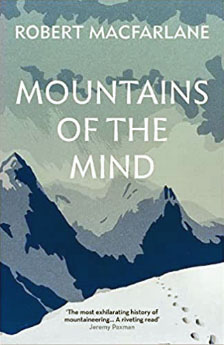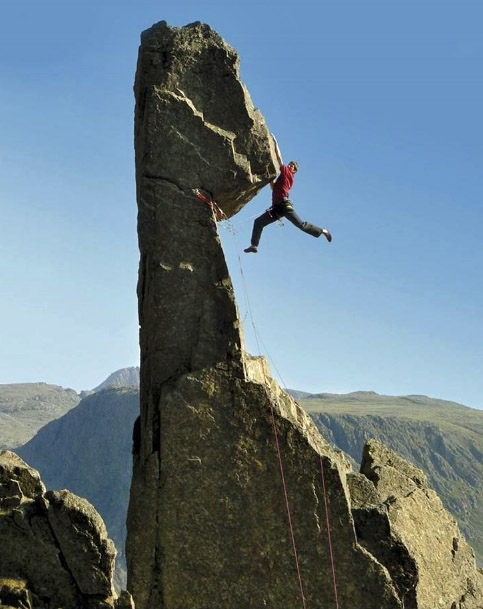
Home
Preamble
Index
Areas
Map
References
Me
Drakkar
Saunterings: Walking in North-West England
Saunterings is a set of reflections based upon walks around the counties of Cumbria, Lancashire and
North Yorkshire in North-West England
(as defined in the Preamble).
Here is a list of all Saunterings so far.
If you'd like to give a comment, correction or update (all are very welcome) or to
be notified by email when a new item is posted - please send an email to johnselfdrakkar@gmail.com.
This is one of several items about walking and walks from home during the
coronavirus lockdown of January - March 2021.
115. Risk, Fear and Pain – or Beauty, Joy and Wonder?

Caton Moor from the Lune valley
I continue to be local-bound and reflecting upon, rather than walking upon, the mountains. If Simon
Ingram (as discussed in
Sauntering 114) needs to imperil himself upon the mountains in order to get his
adrenaline flowing then I think he is in the wrong game. He should be mountaineering not walking. Then
he could learn from the classic book Mountains of the Mind (Macfarlane, 2003). Macfarlane agrees that mountains are for engendering fear: “We had talked, as mountaineers always do, about how strange it is to risk yourself for a mountain, but how central to the experience is that risk and the fear it brings with it.”
 Macfarlane buttresses his argument that risk, fear and indeed death are an integral part of the mountain experience with various quotes, such as this one from John Ruskin, writing in 1863: “This I know and find, practically, that if you come to a dangerous place, and turn back from it, though it may have been perfectly right and wise to do so, still your character has suffered some slight deterioration; you are to that extent weaker, more lifeless, more effeminate, more liable to passion and error in future; whereas if you go through with the danger … you come out of the encounter a stronger and better man … and nothing but danger produces this effect.”
Macfarlane buttresses his argument that risk, fear and indeed death are an integral part of the mountain experience with various quotes, such as this one from John Ruskin, writing in 1863: “This I know and find, practically, that if you come to a dangerous place, and turn back from it, though it may have been perfectly right and wise to do so, still your character has suffered some slight deterioration; you are to that extent weaker, more lifeless, more effeminate, more liable to passion and error in future; whereas if you go through with the danger … you come out of the encounter a stronger and better man … and nothing but danger produces this effect.”
I didn’t know that Ruskin was a mountaineer but I can appreciate that he didn’t want to be thought
more effeminate. However, you can only get so far by quoting others. We wouldn’t pay much regard to a
writer who proselytized the benefits of LSD if he hadn’t himself experienced those benefits, no matter
how many LSD-users he quoted. So, just as Ingram is at pains to show that he’s a real walker, Macfarlane
has to show that he’s a real mountaineer and not a man of letters, words and sentences, safe in his Cambridge study. He interlaces his narrative with various instances of his own daring escapades. He felt “a humming, jostling swarm of fear” on the snowy ridge of Lagginhorn; his “limbs were shivering … heart pistoned” in a rock avalanche near Zinalrothorn; he spent twelve hours huddled in a snow cave during a Cairngorms blizzard; his party crossed the ridge of the Inylchek glacier “like tight-rope walkers”; he was “seized with panic” when he half fell into a crevasse; he “was reminded of medieval knights preparing for combat” when preparing to climb Nadelhorn.
 I hope that none of his readers was inspired by all this manly heroism to dash out to tackle Napes Needle
(shown right) on Great Gable, for the requisite risk, fear and perhaps death, before they had reached page 99. For there Macfarlane has an epiphany. He comments that “I have discovered that it is eminently possible to spend time in the mountains and to be at far less risk than one would be, say, crossing city streets … For me now … the attraction of mountains is far more about beauty than about risk, far more about joy than fear, far more about wonder than pain.”
I hope that none of his readers was inspired by all this manly heroism to dash out to tackle Napes Needle
(shown right) on Great Gable, for the requisite risk, fear and perhaps death, before they had reached page 99. For there Macfarlane has an epiphany. He comments that “I have discovered that it is eminently possible to spend time in the mountains and to be at far less risk than one would be, say, crossing city streets … For me now … the attraction of mountains is far more about beauty than about risk, far more about joy than fear, far more about wonder than pain.”
Is it possible to ‘discover’ something that almost everybody else knows already? By ‘discovered’ I think
he means ‘belatedly realised’. I am reminded of those long-distance runners who emphasise that pain, vomiting,
hallucinations, and so on, are all an essential part of the activity, for only by overcoming them do you reap the
full benefit. For example, Harvie (2011) implicitly compares his unsuccessful attempt to run the 152-mile
Athens-Sparta race with the fateful Everest expedition of George Mallory in 1924.
I never set out on a run
expecting pain and I never sought pain to gain the full benefits from running. My objective was, on the
contrary, to train to reach a level of fitness that would enable me to run within my limits to avoid pain,
vomiting, hallucinations, and so on. I feel the same way about mountains. I do not expect or seek risk,
fear and pain on the mountains. I try to ensure that I never place myself in a situation where they arise.
In fact, during decades of running and walking on the mountains, I have never experienced fear there – the occasional quiver of doubt or misgiving perhaps, but never fear.
However, Macfarlane’s discovery on page 99 does not restrain him for long. He doesn’t go on to write
about the beauty, joy and wonder of mountains. He forgets about all that and continues with another 200 pages
of self-inflicted bravery, climaxing with a gruelling 50-page account of the heroic, glorious death of
Mallory on Everest (plus, of little account it seems, ten others on this and preparatory expeditions). After his discovery
on page 99, why does he care about Mallory so much? Why does he think we care? I know I don’t. My appreciation
of mountains owes nothing to Mallory and his kind.
P.S. I am pleased to report that, after establishing his credentials as a fearless, committed
walker on his first four walks (Sauntering 114), Simon Ingram relaxes somewhat. His next
six walks are up: Cnicht (689 metres) in Snowdonia, Cross Fell (893 metres) in the North Pennines,
Schiehallion (1,083 metres) in Perthshire, Ben Loyal (764 metres) in Sutherland, and Cùl Beag (769 metres)
and An Teallach (1,062 metres)
in the Northwest Highlands. Actually, lightning caused him to abandon
Cùl Beag and settle for a lower, unnamed summit instead. Still, it did enable him to scare the bejesus out
of us again by going on for pages about the dangers of lightning.
I have the measure of Ingram now. He suffers from acute morbidosity. He wallows in the dangerous and unpleasant.
At the National Slate Museum he is fixated on the horrific injuries suffered by miners. He goes on for pages
about the Scottish midges. And then it's ticks and Lyme Disease.
But it is not quite all angst. He has a relatively gentle walk up
Cross Fell, which I sauntered up myself
(Sauntering 56). The terrain on Cross Fell is little more challenging than that on
Caton Moor, although there is a lot more of it. My walk, like Ingram’s, was on a sunny, windless day. That suited
me but not Ingram because he had come specifically to experience Cross Fell’s notorious wind, The Helm.
He seems not to bother with weather forecasts.
Date: January 16th 2021
Start: home; Route: various; Distance: not far; Ascent: not much
Home
Preamble
Index
Areas
Map
References
Me
Drakkar
© John Self, Drakkar Press, 2018-

Top photo: The western Howgills from Dillicar;
Bottom photo: Blencathra from Great Mell Fell



 Macfarlane buttresses his argument that risk, fear and indeed death are an integral part of the mountain experience with various quotes, such as this one from John Ruskin, writing in 1863: “This I know and find, practically, that if you come to a dangerous place, and turn back from it, though it may have been perfectly right and wise to do so, still your character has suffered some slight deterioration; you are to that extent weaker, more lifeless, more effeminate, more liable to passion and error in future; whereas if you go through with the danger … you come out of the encounter a stronger and better man … and nothing but danger produces this effect.”
Macfarlane buttresses his argument that risk, fear and indeed death are an integral part of the mountain experience with various quotes, such as this one from John Ruskin, writing in 1863: “This I know and find, practically, that if you come to a dangerous place, and turn back from it, though it may have been perfectly right and wise to do so, still your character has suffered some slight deterioration; you are to that extent weaker, more lifeless, more effeminate, more liable to passion and error in future; whereas if you go through with the danger … you come out of the encounter a stronger and better man … and nothing but danger produces this effect.”
 I hope that none of his readers was inspired by all this manly heroism to dash out to tackle Napes Needle
(shown right) on Great Gable, for the requisite risk, fear and perhaps death, before they had reached page 99. For there Macfarlane has an epiphany. He comments that “I have discovered that it is eminently possible to spend time in the mountains and to be at far less risk than one would be, say, crossing city streets … For me now … the attraction of mountains is far more about beauty than about risk, far more about joy than fear, far more about wonder than pain.”
I hope that none of his readers was inspired by all this manly heroism to dash out to tackle Napes Needle
(shown right) on Great Gable, for the requisite risk, fear and perhaps death, before they had reached page 99. For there Macfarlane has an epiphany. He comments that “I have discovered that it is eminently possible to spend time in the mountains and to be at far less risk than one would be, say, crossing city streets … For me now … the attraction of mountains is far more about beauty than about risk, far more about joy than fear, far more about wonder than pain.”
